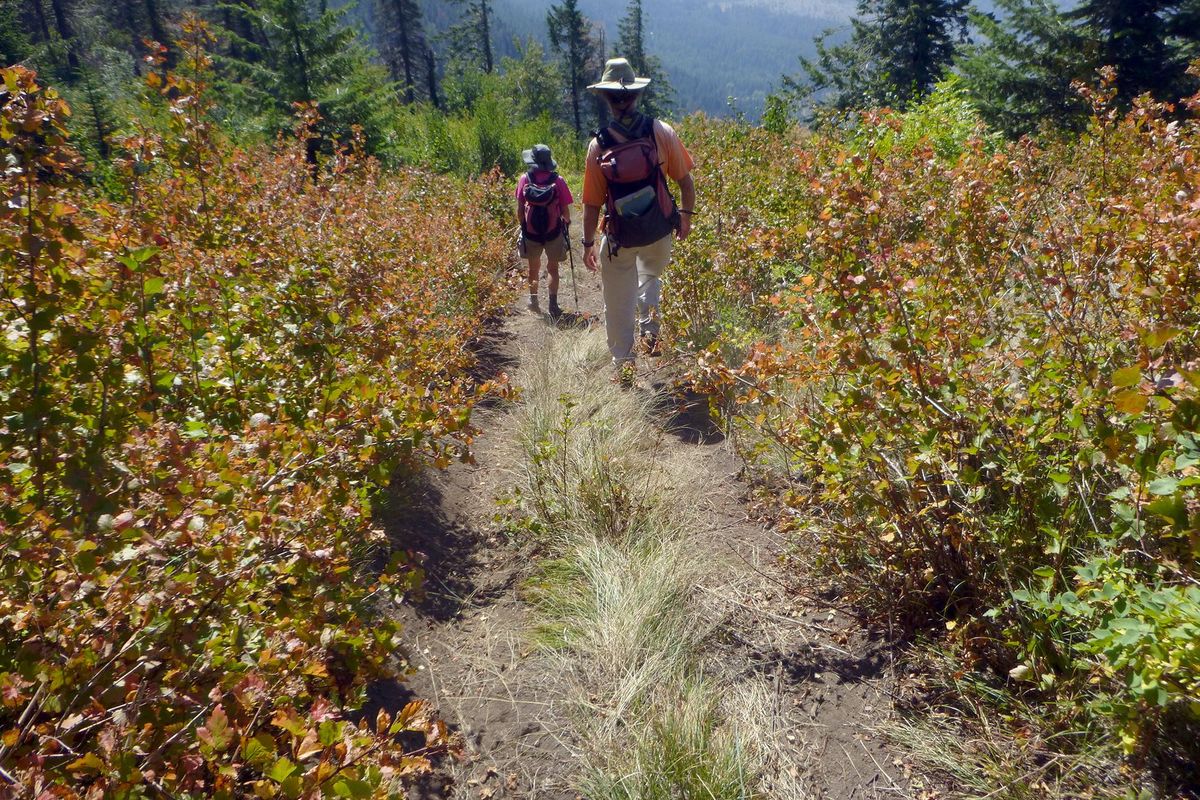Curbing illegal ATV entry constant job at Mount Spokane State Park

With nagging persistence, off-road vehicle riders continue to assault a small but prized natural area of Mount Spokane State Park.
The single authorized foot trail up the spine of Ragged Ridge has been braided with ATV and motorcycle trails entering park boundaries illegally from several directions.
“It’s frustrating,” said Steve Christensen, park manager. “Irresponsible people with ORVs really make me angry. This is such a beautiful place, but they keep making more trails.
“When one of their trails gets rutted out, they drive up another way and create another trail that will eventually wash out.”
The 13,919-acre state park surrounds Mount Spokane and offers a wide variety of recreation. A seasonal road allows visitors to drive to the mountain’s 5,883-foot summit. Lifts assist downhill skiers in winter and snowcats groom about 60 kilometers of cross-country ski trails.
But one area is recognized as a special “bank” for otherwise declining native flora. In 1985, the 624 acres along the spine of land stretching southeast from the main park block was designated as a “natural area preserve.”
Just 4 percent of the entire state park is in this maximum protection category in order to protect its inventory of certain plant communities.
But the challenge of making tracks in the Ragged Ridge Natural Area Preserve is like forbidden fruit that a certain element of ORVers can’t resist.
“I don’t think they have a clue on how much damage they’re doing,” Christensen said. “Some of the scars will never fully heal.”
For more than 16 years, volunteers from the Friends of Mount Spokane State Park have been hiking into Ragged Ridge each summer to hand-pull invasive spotted knapweed and Dalmation todflax that sprouts along the illegal trails.
“Over the years, we’ve got those two weeds under control on Ragged Ridge,” said Cris Currie, president of the group and leader of the weed patrol. “I wish we could have the same success in stopping the vehicles bringing the weeds in.”
In August, he returned for the second time this summer and pulled only one bagful of weeds to pack out on his back. “But we still need to keep at it each year. The ATVs keep coming in and so do the weeds.”
State rules limit use of Ragged Ridge to on-trial hiking, snowshoeing, backcountry skiing and educational, management and scientific activities. No horseback riding is allowed in the preserve. Motorized use is prohibited.
The principal function of natural area preserves in Washington is to preserve natural ecosystems or geologic features of statewide significance, according to the Department of Natural Resources website.
The Ragged Ridge Natural Area preserve is surrounded by 1,600 acres classified as “natural forest area,” which allows slightly more recreation, including huckleberry picking and off-trail hiking.
The remoteness and undeveloped landscape that makes Ragged Ridge special are the characteristics the illegal riders are exploiting.
With no roads leading into the natural area preserve, regular patrols and monitoring are lacking.
“We have only two rangers for the entire park,” Christensen said.
“I can’t tell you how many tank traps we’ve dug. They’ve stopped the vehicles from coming in some places, but motorcycles in particular are hard to stop.”
Thickets of blowdown trees, especially from last November’s wind storms, have helped block access routes in a few areas.
“But there’s always activity at the south end of Ragged Ridge,” Christensen said. “They come in determined to ride into the park. They bring chainsaws.”
Inland Empire Paper Company is helping block access from their lands and a private property owner has agreed to work with park managers to close off illegal access through his property, Christensen said.
“That will help a lot,” he said.
Park rangers demolished portions of an illegal trail that came up in the middle of Ragged Ridge from the northeast side. “It was really steep,” Christensen said. “I don’t know who would want to do that.”
A Washington Conservation Corps crew scheduled to demolish another illegal trail last month was pulled off at the last minute to work elsewhere fighting fire.
“But we have a mini-excavator now and when we can carve out time, we can put it to work making more barriers,” Christensen said. “We blocked off one trail on Aug. 29 and we plan to do more of that this month.
“We can’t block everybody who considers it a challenge to ride into the park. We just try to slow it down. That’s the best we can do.”